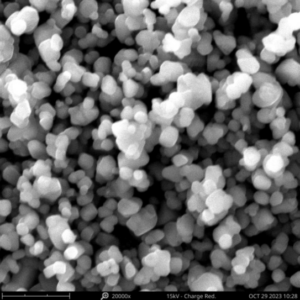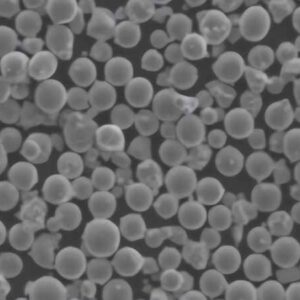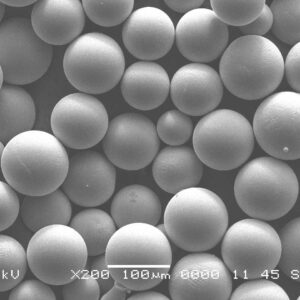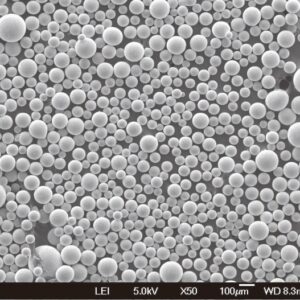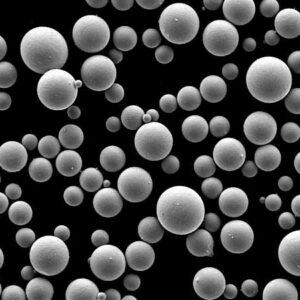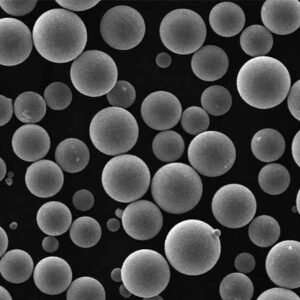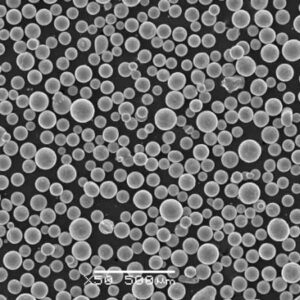Overview of WMoTaNbZr Powder
WMoTaNbZr powder is a remarkable high-entropy alloy (HEA) that has taken center stage in advanced engineering and material science. Known for its superior mechanical properties, exceptional high-temperature resistance, and remarkable strength-to-weight ratio, this alloy is being explored for applications in aerospace, defense, nuclear industries, and more. But what exactly makes WMoTaNbZr powder so special? Let’s dive into the details, from its composition to its industrial applications, and discuss why this powder is becoming the go-to material in cutting-edge technologies.
In this article, we will explore:
- Composition and Properties of WMoTaNbZr Powder
- Applications Across Various Industries
- Available Models and Specifications
- Pros and Cons of WMoTaNbZr Powder
- Comparisons With Other Alloys
- Frequently Asked Questions (FAQs)
What Exactly is WMoTaNbZr Powder?
WMoTaNbZr stands for tungsten (W), molybdenum (Mo), tantalum (Ta), niobium (Nb), and zirconium (Zr), representing the main elements in this high-entropy alloy. Unlike traditional alloys that rely on one dominant base metal, HEAs such as WMoTaNbZr consist of multiple principal elements. This creates a unique combination of physical and chemical properties that outperform traditional alloys in extreme environments.
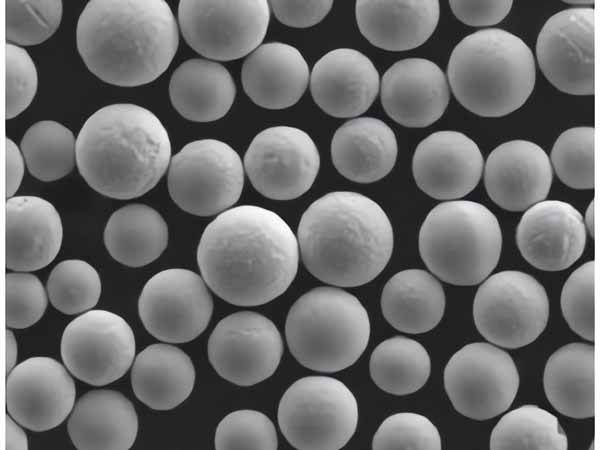
Composition and Properties of WMoTaNbZr Powder
The unique properties of WMoTaNbZr powder stem from its distinct composition of refractory metals. These elements are known for their high melting points and excellent stability under intense conditions. This combination makes WMoTaNbZr powder incredibly robust and suitable for environments that demand resilience.
| Element | Percentage Composition | Primary Property |
|---|---|---|
| Tungsten (W) | 20% | High density, strength, and melting point |
| Molybdenum (Mo) | 20% | Corrosion resistance and good thermal conductivity |
| Tantalum (Ta) | 20% | Excellent ductility and oxidation resistance |
| Niobium (Nb) | 20% | Improves mechanical strength and high-temperature performance |
| Zirconium (Zr) | 20% | Enhances oxidation resistance and toughness |
Characteristics of WMoTaNbZr Powder
WMoTaNbZr powder offers a broad spectrum of favorable characteristics:
- High Melting Point: The melting point exceeds 3000°C, making it ideal for high-temperature applications.
- Exceptional Strength: The alloy maintains its mechanical strength even at elevated temperatures, resisting deformation and failure.
- Oxidation Resistance: Zirconium enhances the powder’s resistance to oxidation, making it suitable for reactive environments.
- Corrosion Resistance: Molybdenum’s addition provides outstanding resistance to corrosion, extending the alloy’s lifespan in harsh conditions.
- Thermal Stability: The multi-element structure ensures excellent thermal stability, preventing degradation at extreme temperatures.
These properties make WMoTaNbZr a superior choice in environments where standard alloys might fail.
Types and Specifications of WMoTaNbZr Powder Models
Several specific models of WMoTaNbZr powder are available, each designed to meet different industry needs. Below is a table of 10 specific WMoTaNbZr powder models:
| Model | Particle Size (μm) | Purity (%) | Key Properties | Best Suited For |
|---|---|---|---|---|
| WM-500 | 1-3 μm | 99.95% | Fine particle size for high-precision applications | Aerospace coatings |
| WM-800 | 5-7 μm | 99.90% | High purity for optimal mechanical strength | Defense and armory |
| WM-1200 | 10-20 μm | 99.85% | Enhanced ductility and thermal conductivity | Nuclear reactors |
| WM-1500 | 20-30 μm | 99.80% | High oxidation resistance | Turbine blades |
| WM-3000 | 30-50 μm | 99.75% | Improved corrosion resistance | Chemical processing |
| WM-3500 | 50-70 μm | 99.70% | Stronger thermal stability for high-temperature use | Spacecraft components |
| WM-4000 | 70-100 μm | 99.65% | Improved impact resistance | Heavy machinery |
| WM-5000 | 100-150 μm | 99.60% | Excellent wear resistance | Industrial tools |
| WM-6000 | 150-200 μm | 99.55% | Enhanced toughness | Oil and gas drilling |
| WM-7000 | 200-300 μm | 99.50% | Superior mechanical properties | Cryogenic storage systems |
Each of these models has been tailored to specific industrial applications, ranging from highly sensitive aerospace components to robust oil and gas machinery. The variation in particle size and purity levels allows for fine-tuning performance according to the particular needs of each project.
Applications of WMoTaNbZr Powder
WMoTaNbZr powder is sought after in industries that require materials capable of withstanding extreme conditions without compromising performance. Below are some of the major industries utilizing this powder, along with the specific applications:
| Industry | Application | Why WMoTaNbZr? |
|---|---|---|
| Aerospace | Turbine blades, engine components | High strength-to-weight ratio, thermal stability |
| Defense | Armor plating, missile components | Impact resistance, oxidation resistance |
| Nuclear | Fuel rods, reactor components | High melting point, radiation resistance |
| Chemical Processing | Corrosive environment handling | Excellent corrosion resistance, durability |
| Energy | Solar panels, fuel cells | Long-lasting performance, high efficiency |
| Medical Devices | Implants, surgical tools | Biocompatibility, non-corrosive |
| Oil & Gas | Drilling tools, deep-sea equipment | Wear resistance, toughness |
| Automotive | High-performance engines, exhaust systems | Lightweight, heat resistance |
WMoTaNbZr in Aerospace Engineering
The aerospace industry is particularly drawn to WMoTaNbZr powder because it offers an outstanding strength-to-weight ratio—a critical factor when designing components for aircraft and spacecraft. Imagine building something as massive as a rocket or a turbine, where every ounce counts, and then having it withstand extreme heat and pressure during flight. WMoTaNbZr powder delivers the performance required to survive such conditions without compromising on weight.
Advantages and Limitations of WMoTaNbZr Powder
Advantages of WMoTaNbZr Powder
- High-Temperature Stability: The alloy maintains its mechanical integrity at temperatures far higher than most traditional materials.
- Superior Corrosion Resistance: WMoTaNbZr powder is nearly impervious to corrosion, making it highly durable in chemically aggressive environments.
- Wear Resistance: Thanks to the presence of tungsten and niobium, the powder exhibits excellent resistance to wear and tear.
- Oxidation Resistance: Zirconium significantly enhances its ability to resist oxidation, extending the life of components.
- Customizable: Available in different grades and specifications, the powder can be tailored to fit diverse industrial needs.
Limitations of WMoTaNbZr Powder
- Cost: The raw materials (especially tantalum and niobium) can be expensive, making WMoTaNbZr powder a costly option.
- Complex Manufacturing Process: Producing this alloy powder involves a highly technical and expensive process, which limits its wide-scale production.
- Limited Availability: Due to the complexity and cost, the availability of WMoTaNbZr powder can be limited.
Comparing WMoTaNbZr Powder with Other High-Entropy Alloys
WMoTaNbZr powder holds its own compared to other high-entropy alloys like AlCoCrFeNi, MoNbTaW, and CoCrFeMnNi. Let’s break down how WMoTaNbZr stacks up in key areas.
| Alloy | Melting Point | Corrosion Resistance | Oxidation Resistance | Strength | Cost |
|---|---|---|---|---|---|
| WMoTaNbZr | >3000°C | Excellent | Excellent | High | Expensive |
| AlCoCrFeNi | 1700°C | Moderate | Moderate | Moderate | Affordable |
| MoNbTaW | >2500°C | High | High | High | Expensive |
| CoCrFeMnNi | 1400°C | Low | Low | Moderate | Affordable |
As seen in the table, while WMoTaNbZr outshines many of its counterparts in terms of melting point, corrosion, and oxidation resistance, it comes at a higher cost, which is a consideration for industries focused on cost-effectiveness.
Suppliers and Pricing for WMoTaNbZr Powder
Sourcing WMoTaNbZr powder can be challenging due to its complex production process and the costs associated with raw materials. Below is a table summarizing major suppliers and their pricing details.
| Price (per kg) | Supplier | Location | Minimum Order | Availability |
| Advanced Alloy Solutions | USA | 10 kg | $1500 | Available upon request |
| Global Metal Powders Ltd. | UK | 5 kg | $1600 | In stock |
| Refractory Metals Inc. | Germany | 1 kg | $1800 | Available but limited |
| Metallurgical Specialties | Japan | 25 kg | $1400 | Lead time: 2-3 weeks |
| PowderTech Industries | China | 50 kg | $1300 | In production |
| ZirTech Materials | South Korea | 10 kg | $1550 | Custom orders available |
| HEA Innovators | USA | 15 kg | $1700 | Bulk discounts offered |
| Rare Metal Suppliers | Canada | 1 kg | $2000 | Limited supply |
| High-Temp Alloys | Australia | 20 kg | $1450 | Available but subject to export restrictions |
| Precision Alloys LLC | Russia | 30 kg | $1350 | Large-scale orders preferred |
Pricing for WMoTaNbZr powder varies significantly depending on factors such as the supplier’s location, the volume of the order, and the specific model or purity required. Bulk discounts are commonly offered for large-scale orders, but lead times can range from immediate availability to several weeks, depending on the supplier.
Pros and Cons of WMoTaNbZr Powder Compared to Other Materials
When comparing WMoTaNbZr powder to other alloys and materials in the market, several advantages and disadvantages become clear. The following table offers a quick comparison:
| Feature | WMoTaNbZr | Stainless Steel | Titanium Alloys | Carbon Steel |
|---|---|---|---|---|
| Melting Point | >3000°C | ~1400°C | ~1600°C | ~1530°C |
| Corrosion Resistance | Excellent | Good | Excellent | Moderate |
| Oxidation Resistance | High | Low | High | Low |
| Strength | High | Moderate | High | Low |
| Density | High | High | Low | Moderate |
| Cost | Expensive | Affordable | Expensive | Very affordable |
| Availability | Limited | Widely available | Widely available | Widely available |
| Machinability | Moderate | Easy | Difficult | Easy |
WMoTaNbZr vs. Stainless Steel
Stainless steel is a more common and affordable material used in many industries. However, when exposed to extreme conditions—such as very high temperatures or corrosive environments—it cannot match the performance of WMoTaNbZr powder. In terms of price, stainless steel is much more affordable, making it ideal for applications where cost is a higher concern than extreme performance.
WMoTaNbZr vs. Titanium Alloys
Titanium alloys are another material commonly used in aerospace and medical applications due to their high strength and low weight. While titanium is lighter than WMoTaNbZr, it doesn’t perform as well under extreme temperatures. However, titanium is more readily available and less expensive, making it an attractive option for applications where cost-efficiency and weight reduction are critical.
WMoTaNbZr vs. Carbon Steel
Carbon steel is the most affordable option among the materials compared here. However, it performs poorly in high-temperature and corrosive environments, making it unsuitable for the kind of extreme applications where WMoTaNbZr powder excels. In terms of machinability, carbon steel is easier to work with, but it falls short in durability and resistance to environmental stressors.

FAQs
To wrap things up, let’s address some common questions related to WMoTaNbZr powder. This FAQ section will clarify any remaining uncertainties.
| Question | Answer |
|---|---|
| What is WMoTaNbZr powder? | WMoTaNbZr is a high-entropy alloy made up of tungsten, molybdenum, tantalum, niobium, and zirconium. It’s used in extreme environments due to its excellent strength, corrosion resistance, and high-temperature stability. |
| What are the primary applications for WMoTaNbZr powder? | WMoTaNbZr is used in aerospace, defense, nuclear reactors, chemical processing, energy systems, and medical devices—essentially any industry requiring materials to withstand extreme conditions. |
| How is WMoTaNbZr powder made? | The powder is produced through advanced metallurgical techniques like mechanical alloying, sintering, or powder metallurgy processes. These methods combine the elements at precise ratios to ensure high-performance characteristics. |
| Why is WMoTaNbZr powder so expensive? | The high cost is due to the expensive raw materials like tantalum and niobium, as well as the complex and energy-intensive manufacturing processes required to produce this high-entropy alloy. |
| What are the key advantages of WMoTaNbZr powder? | Its key benefits include superior high-temperature performance, excellent corrosion and oxidation resistance, high strength, and wear resistance. |
| Are there any disadvantages to using WMoTaNbZr powder? | The primary disadvantages are its high cost and limited availability, as well as the complexity involved in manufacturing and machining the material. |
| Can WMoTaNbZr powder be used in medical applications? | Yes, due to its biocompatibility and non-corrosive properties, it is suitable for use in implants, surgical tools, and other medical devices. |
| What industries benefit most from WMoTaNbZr powder? | Aerospace, defense, nuclear energy, chemical processing, and the oil & gas industry benefit the most from this advanced material due to its durability and performance in extreme environments. |
| How does WMoTaNbZr compare to other high-entropy alloys? | WMoTaNbZr offers a higher melting point and better corrosion resistance than many other high-entropy alloys, but it is more expensive and has limited availability. |
| Where can I buy WMoTaNbZr powder? | Major suppliers include Advanced Alloy Solutions, Global Metal Powders Ltd., Refractory Metals Inc., and others. However, availability may vary depending on location and order size. |
Conclusion
WMoTaNbZr powder is truly a marvel of modern metallurgy, offering unparalleled performance in environments that push materials to their limits. Whether it’s surviving the intense heat of a turbine or withstanding the corrosive atmosphere in a chemical reactor, this high-entropy alloy outshines traditional materials in nearly every aspect. However, its high cost and limited availability make it a niche option for industries where performance matters more than price.
If your project demands the very best in terms of durability, strength, and resistance to environmental factors, WMoTaNbZr powder may be the solution you’re looking for. From aerospace applications to medical devices, its versatility and robustness make it one of the most exciting materials in the world of engineering today.
With its impressive portfolio of models, specific applications, and distinct properties, WMoTaNbZr powder is here to stay—especially in industries that prioritize performance over everything else. Whether you’re designing the next generation of spacecraft or building robust tools for deep-sea exploration, this material should definitely be on your radar.

